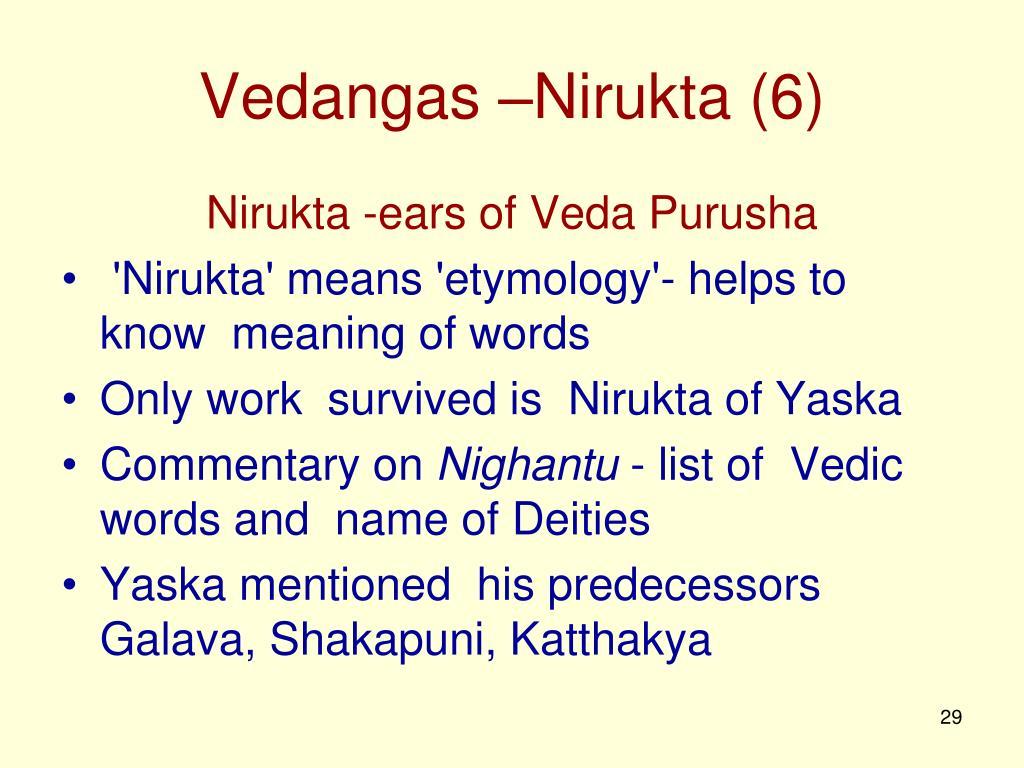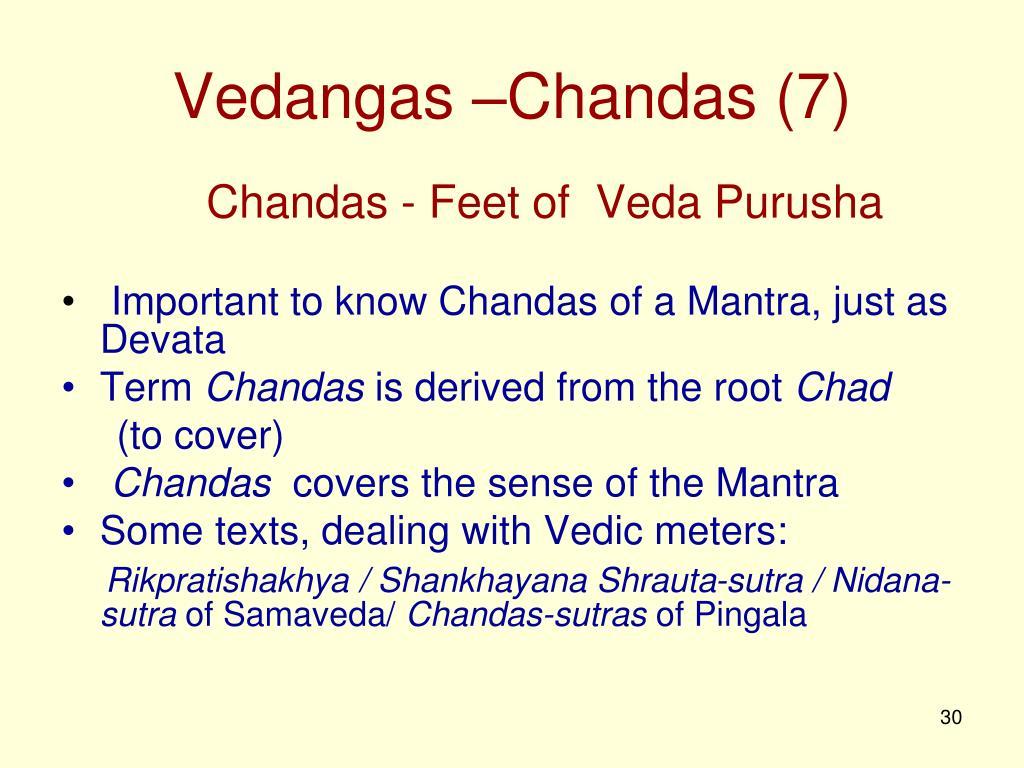Skip to main content
Vedangas II - Brief on Nirukta and Chhanda
Basics of Nirukta and Chandas
I. Nirukta: Etymology and Lexicography

A. The Need for Nirukta
- To demonstrate the importance of Nirukta, the speaker begins by giving an example of a translated verse from the Tandya Brahmana.
- A translation by a Dutch philosopher renders the verse as nonsensical: The world of heaven is as far removed from this earthly world as a thousand cows standing one above the other.
- The problem with the translation lies in the incorrect understanding of the word "gau" which has been translated as cow, while in fact, "gau" refers to Earth in this context.
B. Function of Nirukta
- Nirukta serves as a guide to understand the intended meaning of words used in the Vedas.
- It helps prevent misinterpretations arising from using ordinary meanings of the words, thus, making the intended meaning explicit.
- Nirukta is basically a thesaurus or a set of synonyms, named Nighantu, that are classified in a systematic manner.
C. Structure of Nighantu
- Organized into three Kandas (sections):
-
Naighantuka Kanda: 3 chapters (Adhyayas), 17 groups of synonyms (415 words).
-
Naigama Kanda: 278 words with multiple meanings, in 3 groups.
-
Daivata Kanda: 151 words containing the names of Devatas, in 3 groups.
- Nighantu consists of rarely used words.
D. Nirukta as Commentary
- Nirukta (written by Yaska, 5th century BCE) is a commentary on Nighantu, explaining the origin and meaning of complex words.
II. Chandas: The Study of Metrics

A. Significance of Chandas
- The Samhita portion of the Vedas is in prose, hence, metrics are very important.
- Chandas is essential for understanding the metrical structure of the mantras.
- Understanding metrics helps to ensure correctness of pronunciation and recitation.
- Missing or extra syllables can throw off the rhythm, hence Chandas.
B. Chandas in Poetic Composition
- Chandas determines the structure or meter of a poetic composition.
- Ensures that the Vedic mantras are preserved intact without additions or deletions.
- Has a check and balance function for the preservation of mantras.
- Rules of Chandas also apply to other literature set in prosody (like Kalidasa’s Shakuntala).
C. Structure of Meters
-
Padas: Meters are made of padas.
- Most Vedic meters have four padas.
- Some have three padas.
-
Syllables: Each pada has a specific number of syllables.
-
Example Gayatri Mantra is used to show how chandas helps in deciphering the structure.
- The mantra is: svadisthaya madisthaya pavasva soma dharaya | indraya patave sutah ||
- This is set in the Gayatri meter
- Gayatri has three padas, each with eight syllables (i.e., 24 syllables in total).
D. Vedic Meters
- Seven main meters:
- Gayatri, Ushnik, Anustup, Brihati, Pankti, Trishtup, Jagati.
- Each meter has a defined structure with a specific number of padas and syllables.
-
Example:
- Gayatri has three padas of 8 syllables each (24 total).
- Brihati has three padas of 8 syllables and one pada of 12 syllables (36 total).
- Trishtup has four padas of 11 syllables each (44 total).
E. Role of Chandas
- Without knowledge of Chandas, it is impossible to ascertain the metrical structure of mantras.
- It helps us to identify any errors in the mantras, for example, interpolations or omissions.
F. Additional Notes
- Pingala developed a well developed Chanda Shastra in 200 BCE.
- Rudimentary foundations of binary mathematics was found during the development of Chandas Shastra.
III. Conclusion
- Nirukta and Chandas are crucial Vedangas for proper understanding and preservation of the Vedic corpus.


